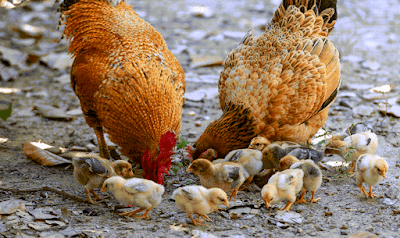Methods of Sexing in Birds:
Accuracy in sex identification in birds is vital for management, conservation and development of a population especially among captive breeding systems (Morinha et al., 2012).
Furthermore, bird species that are nearly extinct are preserved and bred specifically to suppress inbreeding or mating closely related birds.
 |
| Methods of sexing in birds |
Bird farmers or keepers are faced with a serious challenge of separating different sexes at hatching. Also, the reproductive organs are inside the body cavity in male birds, which adds to the complexity.
Today’s discussion will focus on some of the sexing techniques used in birds: vent sexing, feather sexing and molecular sexing.
WHAT DOES SEXING IN BIRDS ENTAIL?
Days old hatchling -> Is a male hatchling OR Is a female hatchling?
General advantages of sexing:
VENT SEXING
Venting or vent sexing involves holding a hatchling facing downwards using one hand, followed by expelling the fecal material until a bulb like structure is seen in the cloaca.
The presence of a bulb like structure signifies that the new hatchling is male whilst the absence simple entails that the hatchling is female. Venting is a common traditional method to sex male hatchlings from female ones among different bird species.
Trained personnel often do venting in birds.
Species include:
Advantage
Disadvantage
MOLECULAR SEXING
Molecular geneticists are able to determine the sex bird species using a technique called Polymerase chain reaction-Agarose gel electrophoresis.
Whereby, a day old hatchling’s feathers are used to extract Deoxyribonucleic acid (DNA). Unlike humans, females are heterogametic (ZW) whereas males are homogametic (ZZ).
The preservation of captive species can be achieved by these laboratory practices.
Advantages of the use of laboratory tools
Disadvantages
FEATHER SEXING
Feather sexing is based on the rate of growth of wings in one day old hatchlings.
Long primary feathers are typical of female hatchlings, when compared to the covert feathers; while male hatchlings have short primary feathers in comparison to the coverts.
Advantages
Disadvantages
Note: Let us farm in style knowing the sex of the birds
Conclusion
In conclusion, the use of laboratory tools in the molecular genetics and physical characterization, and the use of venting and feather sexing in birds, play a vital role in determining the sex of new hatchlings.
References
Griffiths, R., Double, M. C., Orr, K., & Dawson, R. J. (1998). A DNA test to sex most birds. Molecular ecology, 7(8), 1071-1075.
Morinha, F., Cabral, J. A., & Bastos, E. (2012). Molecular sexing of birds: A comparative review of polymerase chain reaction (PCR)-based methods. Theriogenology, 78(4), 703-714.
